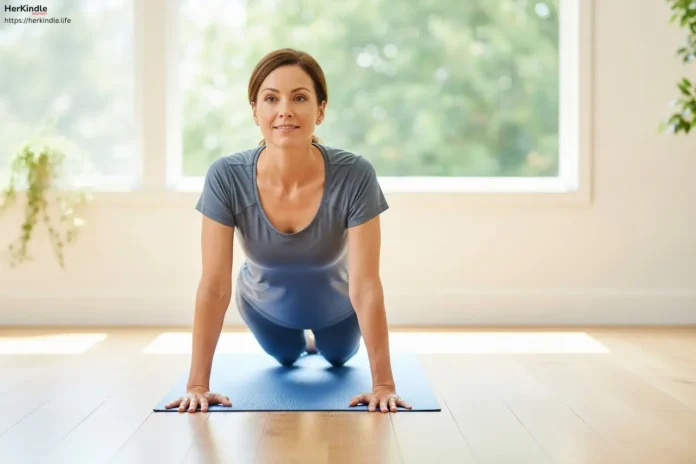Poor posture has become a widespread health issue in today’s increasingly sedentary world, impacting women over 35 across the US and Canada and beyond. Beyond aesthetic concerns, sustained postural imbalances can lead to chronic pain, reduced mobility, and heightened risk of musculoskeletal disorders.
Understanding how to improve posture through targeted posture correction exercises can help reclaim proper spinal alignment, reduce discomfort, and enhance overall musculoskeletal health. In this comprehensive guide, you will discover practical, evidence-based strategies and exercises tailored specifically to meet adult needs.
Explore detailed insights on anatomy, biomechanics, and corrective techniques that seamlessly integrate into your daily life for lasting benefits.
The Biomechanics of Poor Posture: Understanding the Problem
Poor posture typically involves malalignment such as slouched shoulders, rounded backs, and forward head posture. This misalignment creates muscular imbalances where some muscles become overused and tight while others weaken and lengthen. Such imbalances can cause pain and hinder movement efficiency.
Key postural dysfunctions include:
- Upper Crossed Syndrome: Tight chest and upper trapezius muscles paired with weak neck flexors leading to forward head and rounded shoulders.
- Lower Crossed Syndrome: Overactive hip flexors and lumbar extensors combined with weakened gluteals and abdominals causing anterior pelvic tilt and excessive lower back curvature.
Uncorrected posture problems contribute to joint strain, chronic pain, reduced range of motion, and even degenerative conditions like osteoarthritis.
Effects on Daily Life and Movement
The consequences of poor posture extend to activities such as walking and running, where inefficient biomechanics increase energy costs, alter breathing, and raise injury risk. Applying posture exercises for adults aimed at restoring alignment improves both physical function and comfort.
Posture Correction Exercises for Adults: Targeted and Effective
Addressing postural imbalances requires a multi-faceted approach of strengthening weak muscles, stretching tight tissues, and promoting body awareness. Below are scientifically supported posture correction exercises designed to improve alignment and reduce discomfort.
Key Posture Improvement Exercises
- Child’s Pose: A gentle yoga stretch elongating the spine, glutes, and hamstrings.
- Forward Fold: Decompresses the spine and improves flexibility in lower back and hamstrings.
- Glute Bridge: Strengthens glutes and pelvis for core stability and lower back relief.
- Isometric Pulls: Builds endurance in shoulder and back stabilizers.
- Chin Tucks: Reverses forward head posture by strengthening deep neck flexors.
- Snow Angel Stretch: Opens tight chest and shoulders, countering rounding.
- Doorway Resistance Band Rows: Strengthens rhomboids and middle trapezius muscles essential for shoulder alignment.
Incorporating these exercises into a routine 3-4 times per week supports gradual posture correction. Start gently and increase repetitions or hold times as endurance improves.
For personalized guidance, especially if experiencing pain, consulting a physical therapist ensures the most beneficial exercise selection.
The Role of Hip Flexors and Core
Healthy hip flexors are crucial for balanced posture. Exercises like lunges, straight-leg raises, and floor-sliding mountain climbers help maintain strong and flexible hips, which directly affect spinal alignment.
Strong core musculature supports the spine and prevents slouching. Exercises such as planks, pelvic tilts, and dead bug variations reinforce the deep stabilizing muscles.
Ergonomics and Daily Posture Maintenance
Long-term maintenance of good posture requires attention to ergonomics and daily habits:
- Position your computer monitor at eye level to avoid neck strain.
- Use chairs that support spinal curves with proper lumbar padding.
- Take movement breaks every 30 minutes to avoid prolonged static postures.
- Use posture reminder apps or wearable devices that prompt realignment.
- Practice mindful breathing and postural awareness throughout the day.
By optimizing workstation setup and integrating posture correction exercises, you reduce cumulative strain and foster lasting musculoskeletal health.
Special Considerations for Forward Head Posture
A common modern challenge is forward head posture, often amplified by smartphone and screen use. This condition increases cervical spine strain and can cause headaches and neck pain.
Effective corrective actions include:
- Chin Tucks: Strengthen deep cervical flexors.
- Neck Flexion Stretch: Releases tight suboccipital muscles.
- Thoracic Spine Mobilization: Using foam rollers to extend thoracic segments.
- Scapular Retraction with Resistance Bands: Strengthen middle and lower trapezius muscles.
Consistency in performing these exercises 3-5 times per week can significantly improve head and neck alignment within 6 weeks.
The Importance of Proprioception and Neuromuscular Control
Enhancing body awareness through proprioceptive exercises supports posture correction by improving balance and coordination. Activities such as single-leg stands, heel-to-toe walking, and balance board drills train the nervous system to better stabilize joints and maintain proper alignment.
Additionally, neuromuscular training enhances sports performance and reduces injury risk by refining muscular coordination and postural control. These benefits extend to everyday life, especially for women 35 and older, helping sustain mobility and function.
Conclusion
Posture correction exercises offer a powerful and accessible way for women over 35 to reclaim alignment and improve musculoskeletal health. These exercises, combined with ergonomic adjustments and increased postural awareness, address core muscular imbalances and spinal misalignments, helping to reduce pain and prevent chronic conditions.
Start by incorporating gentle posture exercises into your daily routine and adapting your environment for better support. Remember, improving posture is a gradual process requiring consistent effort, but the benefits to your health, confidence, and quality of life are profound.
For personalized programs tailored to your unique needs, consider consulting qualified physical therapists or posture specialists.
Empower yourself with knowledge and action to stand tall, move freely, and live comfortably with optimal posture.
Frequently Asked Questions
Can you correct years of bad posture?
Yes. Consistent practice of corrective exercises focusing on muscle strengthening, stretching, and body awareness can significantly improve posture over weeks and months.
How often should I do posture correction exercises?
Aim for 3-5 times per week, starting with gentle routines and progressively increasing intensity and duration.
Are ergonomic devices a replacement for exercise?
No. Ergonomic supports complement exercises but do not replace the need to strengthen muscles and develop postural habits.
Is professional guidance necessary?
For mild issues, self-guided exercises can help. For pain or complex conditions, consult a physical therapist.
Can posture correction reduce chronic pain?
Yes. By restoring muscle balance and spinal alignment, posture correction exercises often alleviate neck, shoulder, and back pain.







